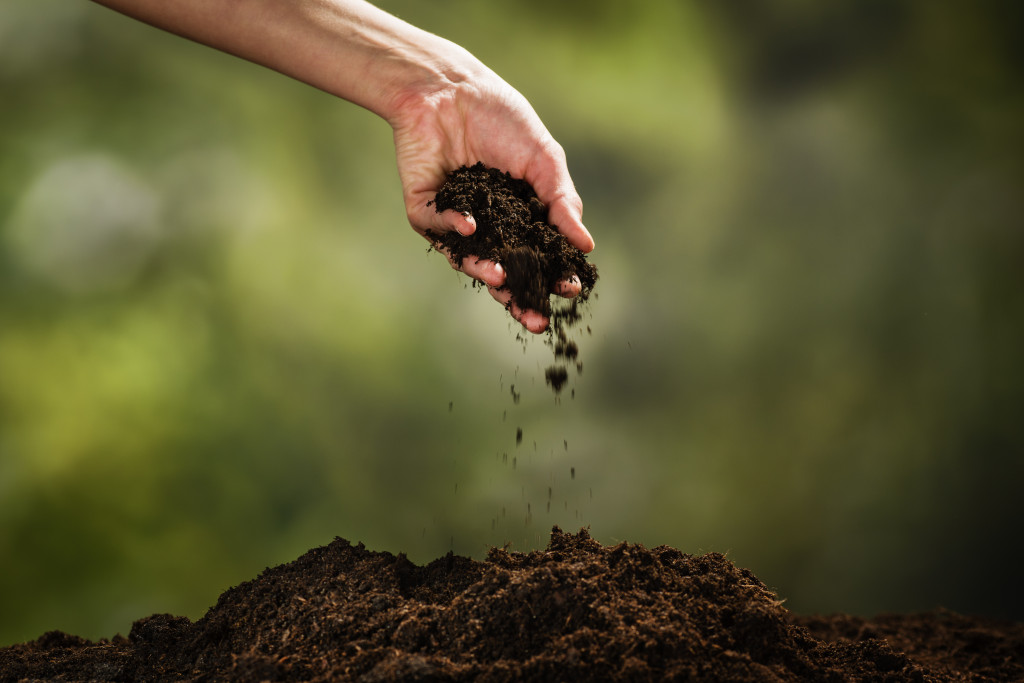The most nagging insects that infest homes and yards are mosquitoes, but which can be controlled via pesticide and non-pesticide methods. With the pesticide method, three different types of chemicals are used—either larvicides, adulticides, or synergists. Larvicides are used for larvae, adulticides for adult mosquitoes, and synergists to optimize adulticides.
Mosquitoes are bound to infest your area if uncontrolled but are pesticides the right option? Your community may offer free mosquito elimination service through planes or trucks, but if it doesn’t and you choose to apply pesticides on your own, make sure to read instructions carefully and follow them to avoid any potential consequences for people, pets, and most especially, the environment.
Be wary about the effects of pesticides on the environment. Frequent use can damage your landscaped yard, counter-effective if you aim to make your lawn look healthier. No matter how careful the application may be, chemicals can affect the ecosystem, both land and water. Here are the major kinds of mosquito insecticides, their environmental impact, and what you can do to mitigate their effects:
Larvicides
These kinds of insecticides aim to nip mosquitoes in the bud, preventing larvae growth and dispersion by applying chemicals directly to the water. Liquid larvicides are directly applied to mosquitoes’ breeding habitats. The chemicals effectively prevent the larvae to turn into mature adult mosquitoes and spread out.
Larvicide products can be used indoors and outdoors around the home. Most of the time, when mosquitoes have largely infested your community needing large-scale mosquito control methods, the local government interferes.
The most common approach is using larvicides, which come not just in the form of liquids but also pellets, dunks, granules, tablets, and briquettes. In the form of liquid, larvicides are applied into the water directly using plane- or truck-mounted sprayers and backpack sprayers.
While EPA makes sure that the larvicide products used are safe for humans when the label instructions are just strictly followed, it may not guarantee environmental safety. One study shows it doesn’t just affect mosquitoes in their larval stage but also other non-target organisms.
Adulticides
Adulticides are used to kill adult mosquitoes that spread the Zika Virus or West Nile virus. Just like larvicides, applying adulticides can be done by the local government, experts, or through DIY. Indoors or outdoors, adulticides are safe for humans and pets when label instructions are followed.
This type of insecticide comes in the form of foggers, coils, and sprays or aerosols and is applied in areas where mosquitoes commonly rest, which are the dark, humid areas of your home, such as in the laundry room, behind furniture, and closets or sinks.
Outside the home, mosquitoes usually reside in the undersides of bushes or trees, tall or dense grasses, under porches and decks, in moist, shady parts, and buildings’ eaves.
Applying the adulticide by yourself, make sure to follow the instructions carefully. Avoid applying it on plants that are blooming or are still visited by pollinators such as butterflies and bees, as well as directly on vegetables and fruits.
Just like any pesticides, when adulticides come into contact with the soil, it puts other soil organisms at risk, which perform crucial functions for a healthier ecosystem such as carbon transformation, soil structure maintenance, nutrient cycling, and more, damaging the health of the soil in effect.
Synergists
Before most insecticides are used, especially adulticide products, synergists are first applied. Synergists can greatly enhance the effectiveness of insecticides and have a little toxic impact on humans.
Synergists cannot eliminate insects on their own, but they’re still categorized under pesticides because they have to be mixed with other insect-killing products.
Since pests tend to have the natural ability to adapt to pesticide chemicals such as pyrethrins by breaking them down and bouncing back from the initial shock, synergists prove to slow or break this process down; hence, making the chemicals more lethal to pests.
Unfortunately, other soil-beneficial insects get weakened by synergists too, so they’re also killed in the process even if they’re not the target. When synergists are applied near or into bodies of water, they can also greatly harm aquatic animals.
Explore Non-Pesticide Options for a Healthier Ecosystem

A healthy lawn depends on healthy soil, and healthy soil depends on a balanced ecosystem among soil organisms. Pesticides hurt the soil by damaging the organisms it needs to flourish. You may want to consider a non-chemical approach as much as possible to avoid damaging non-target organisms that are beneficial for soil health and promote a healthier-looking lawn.


